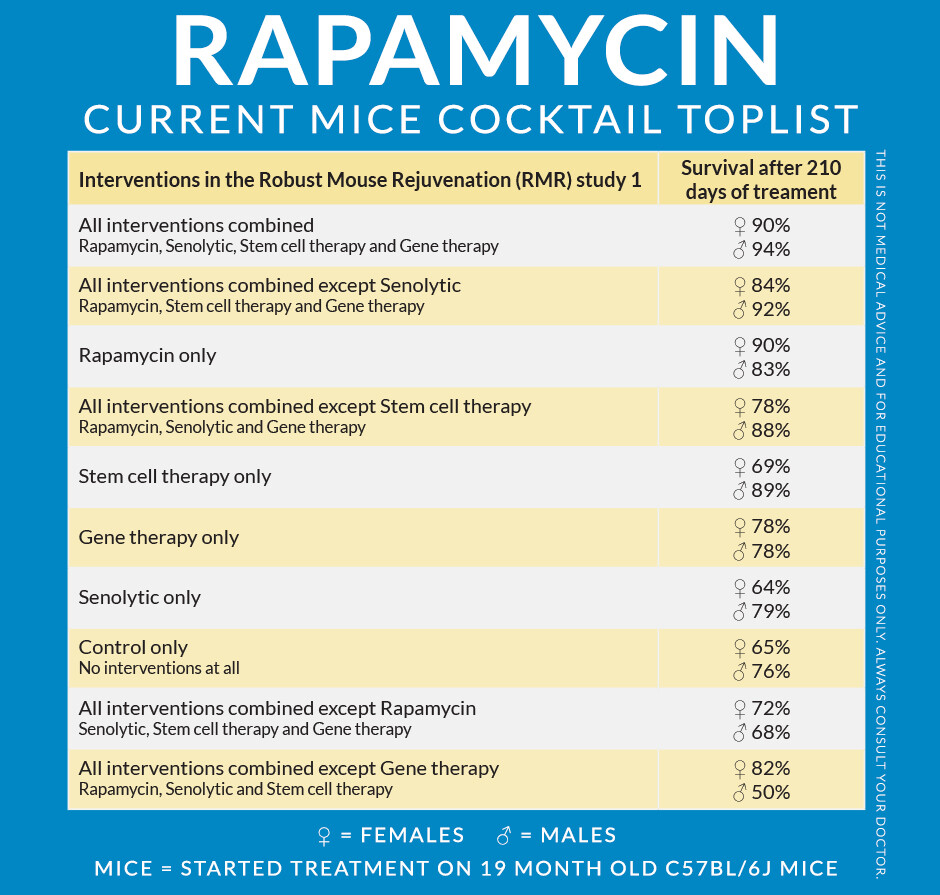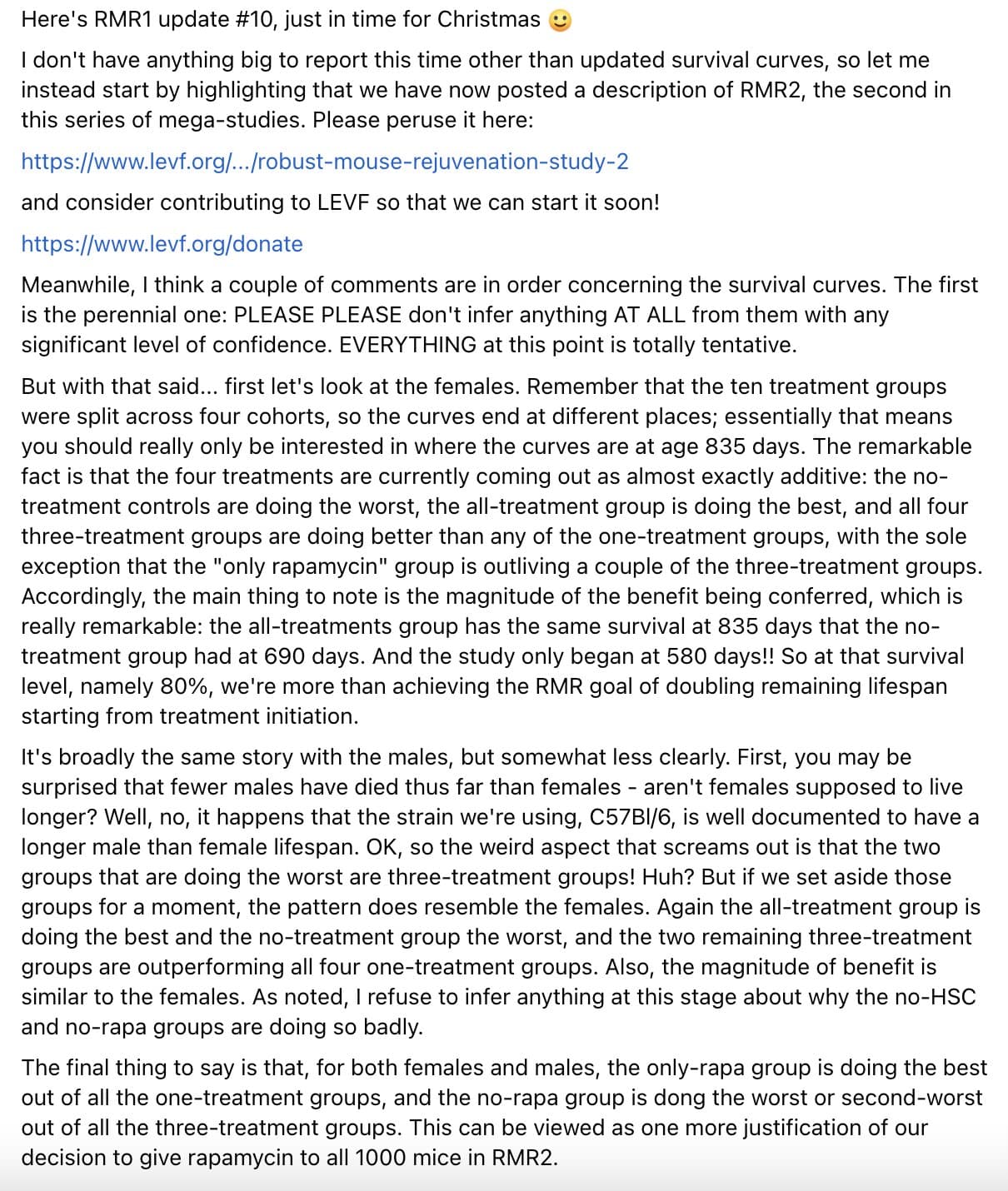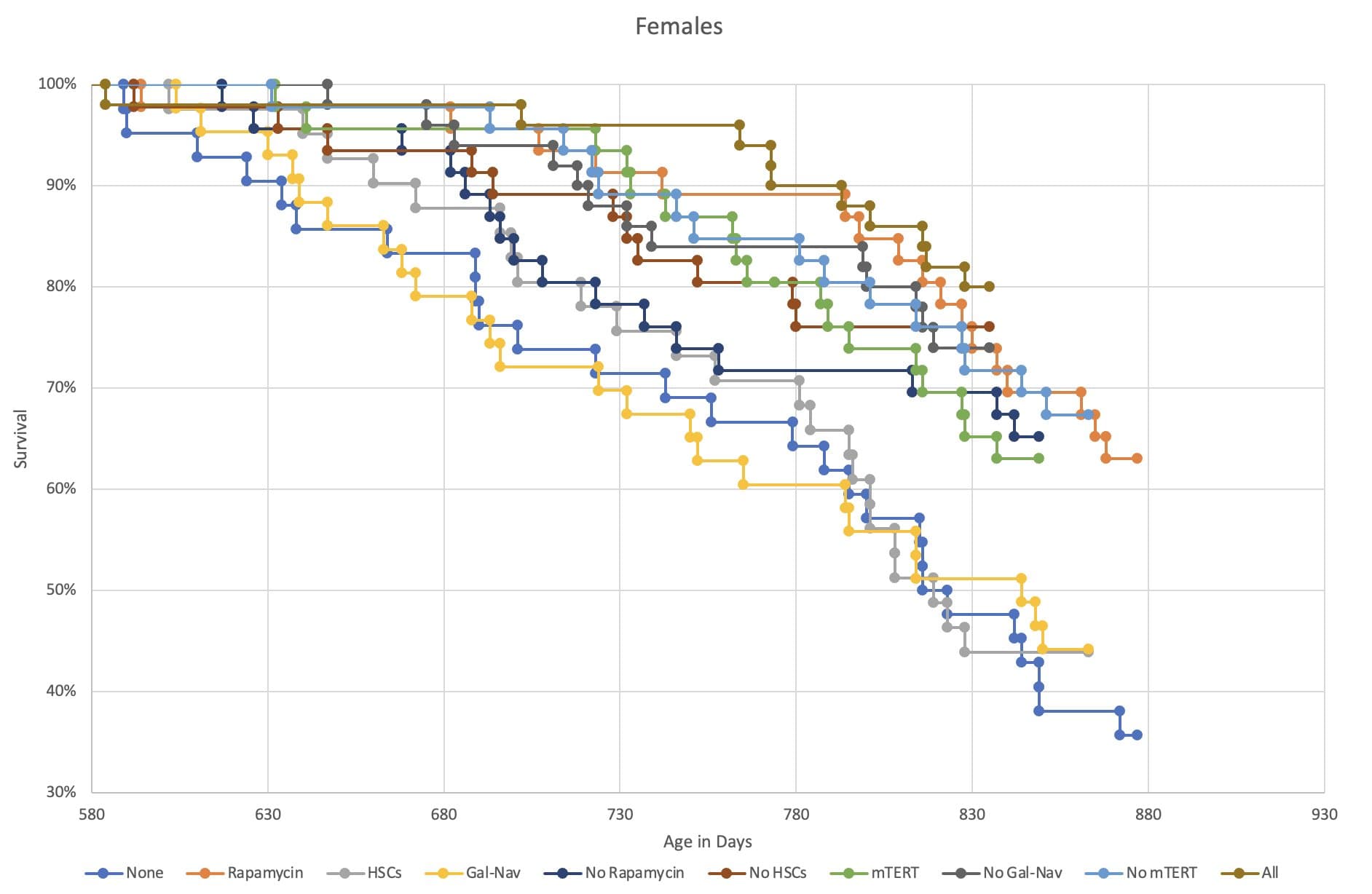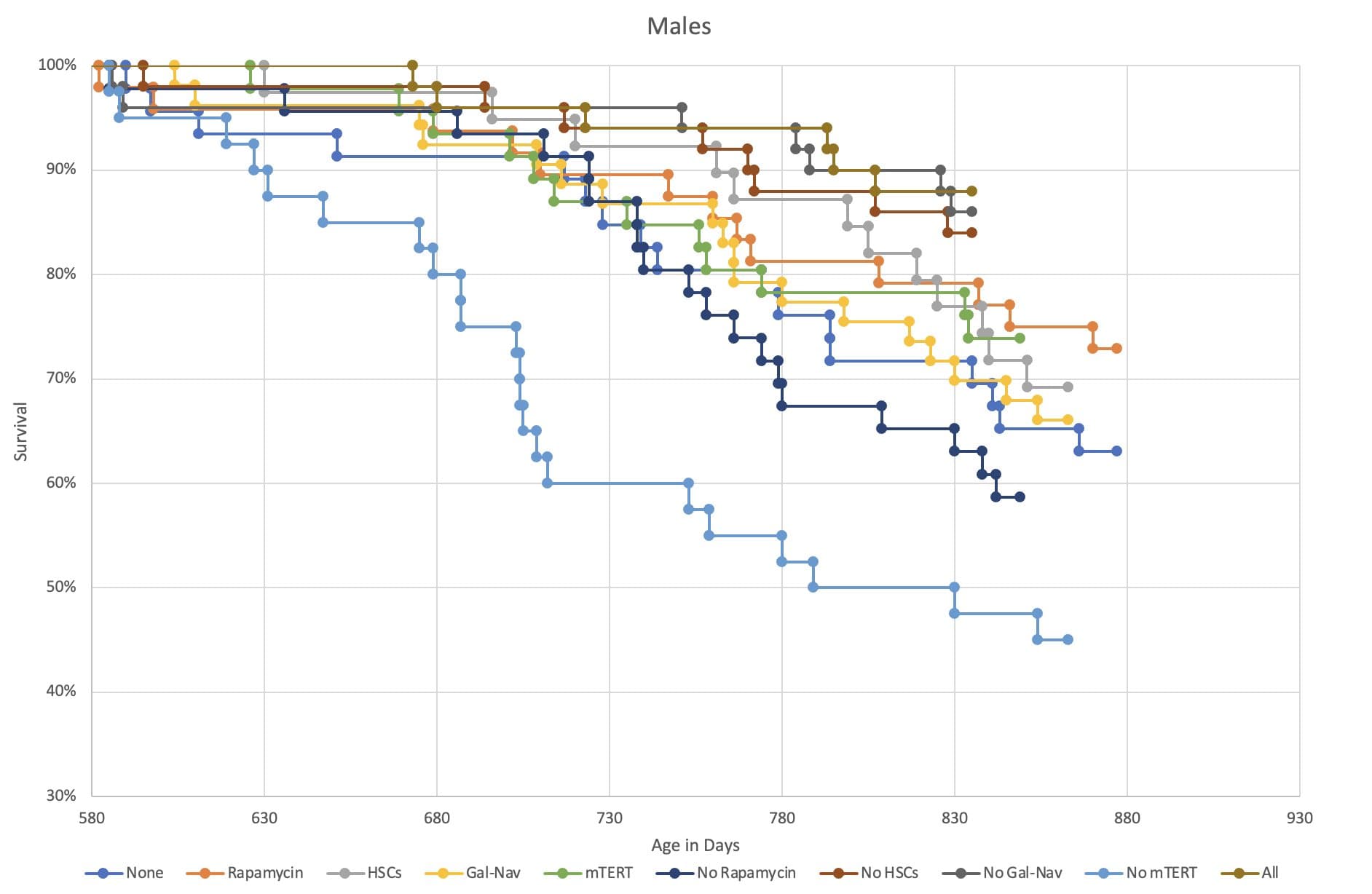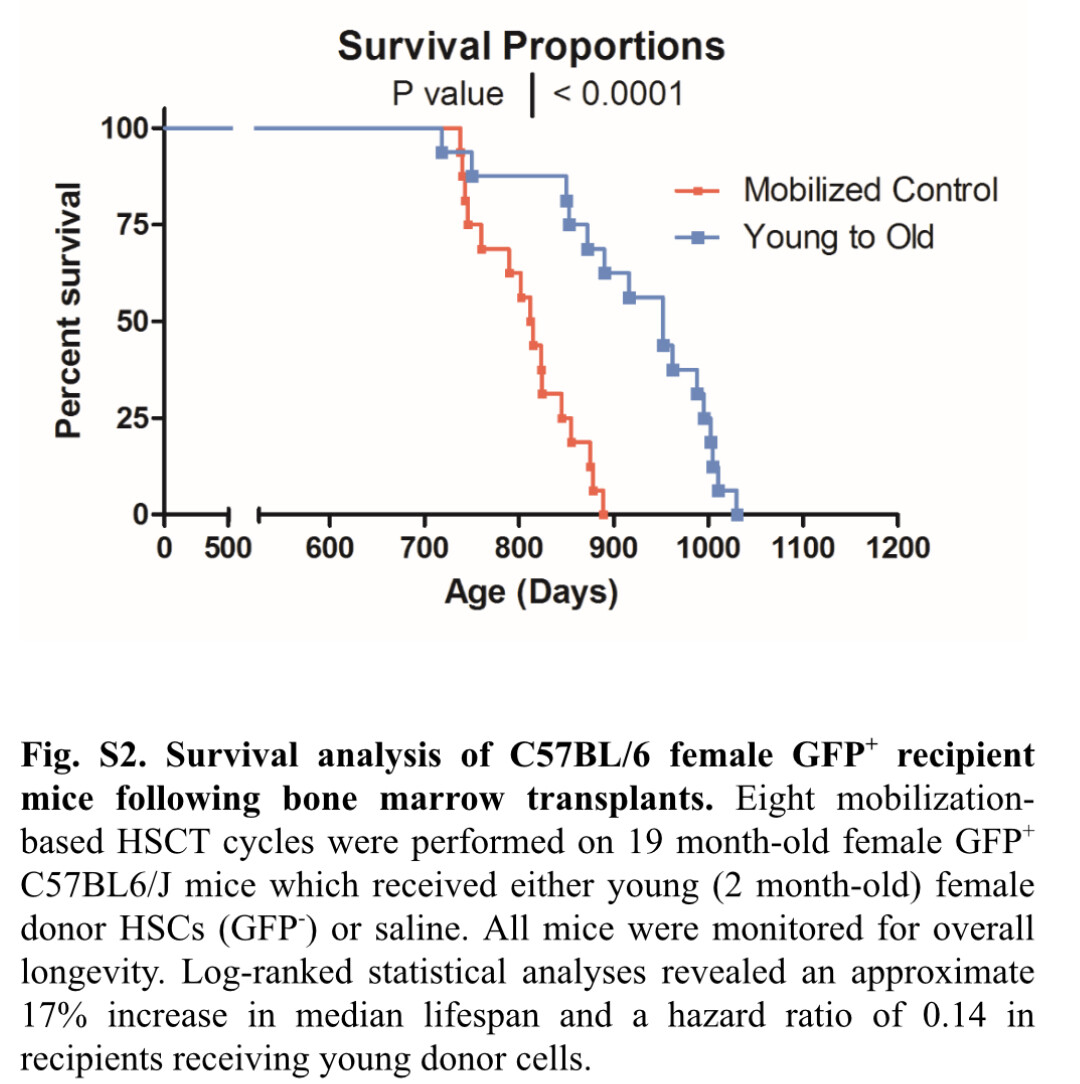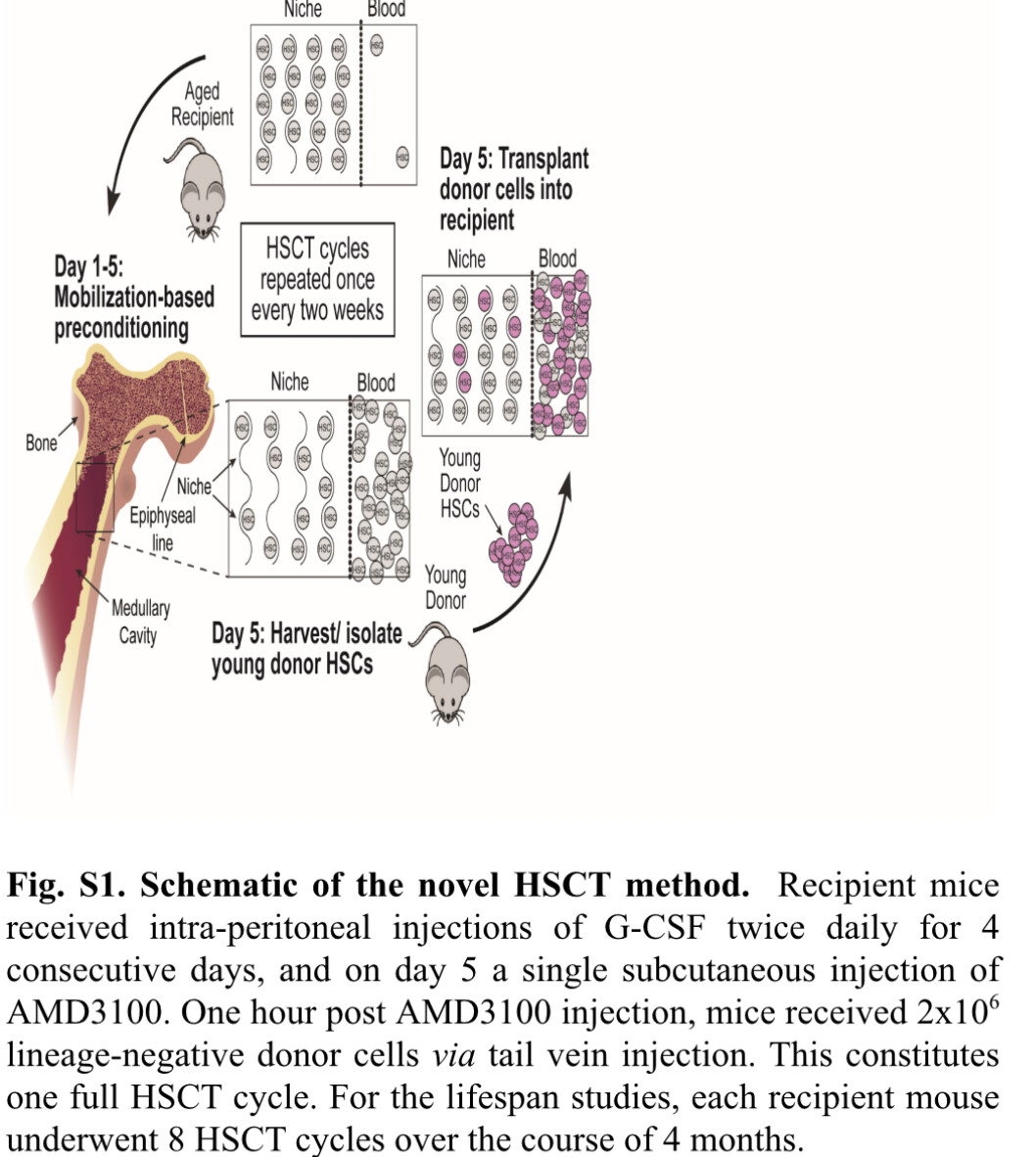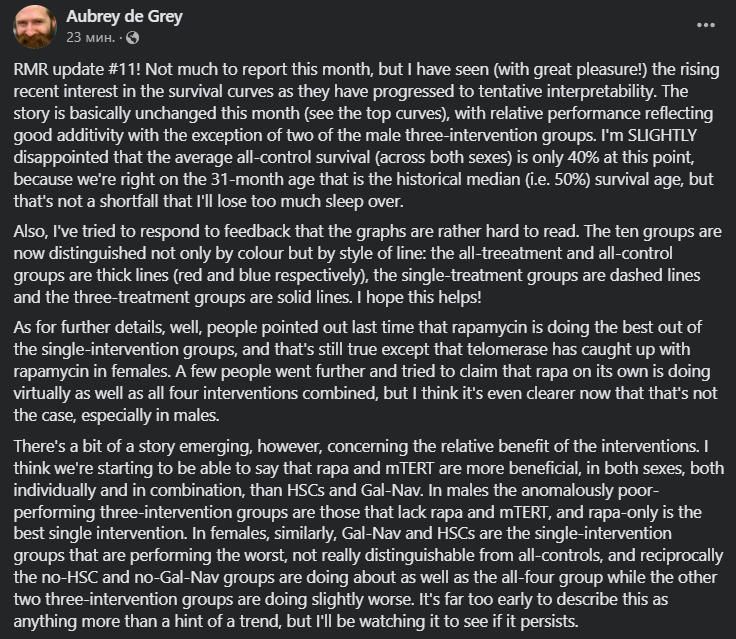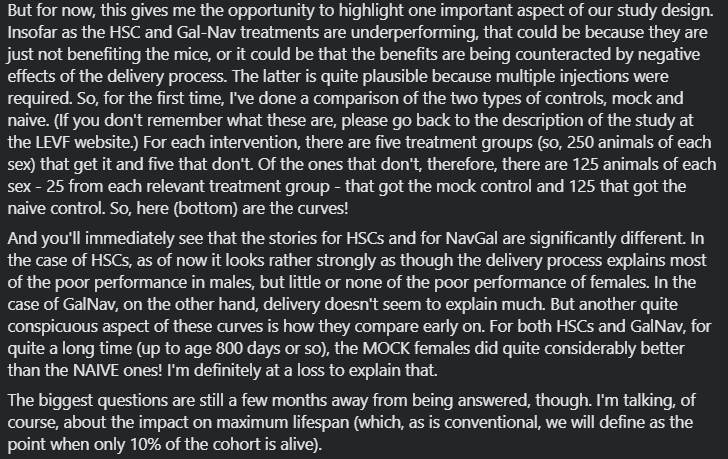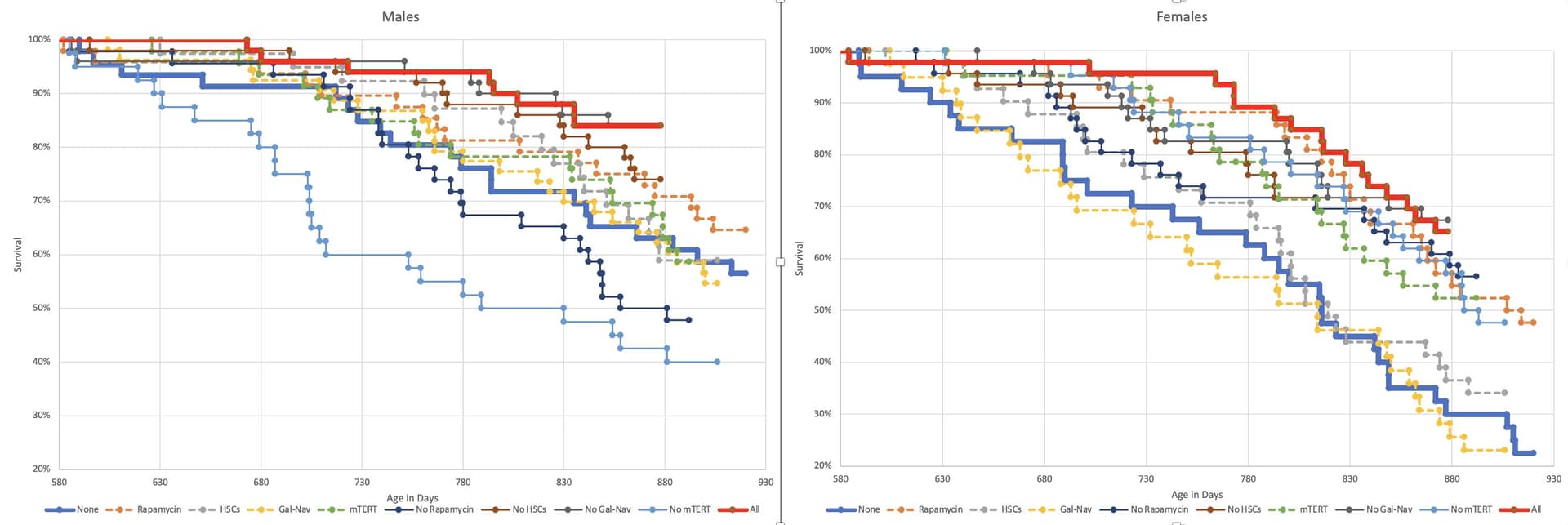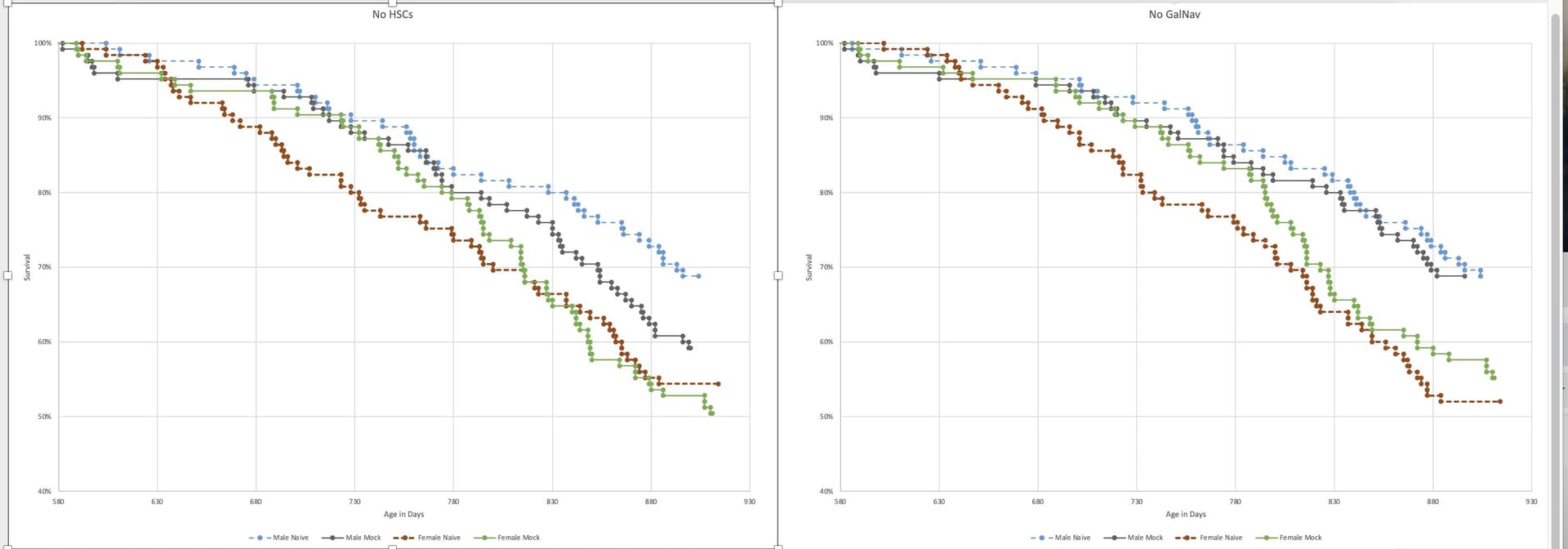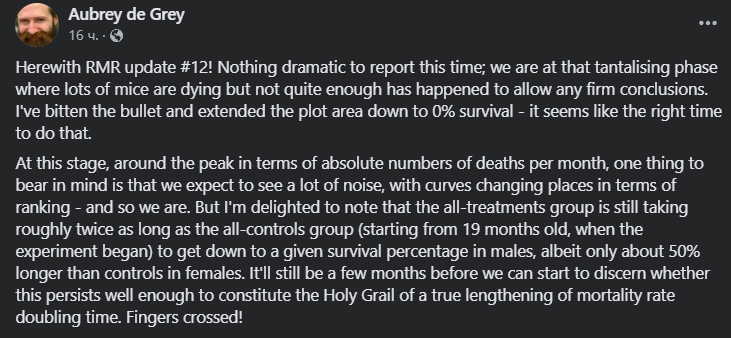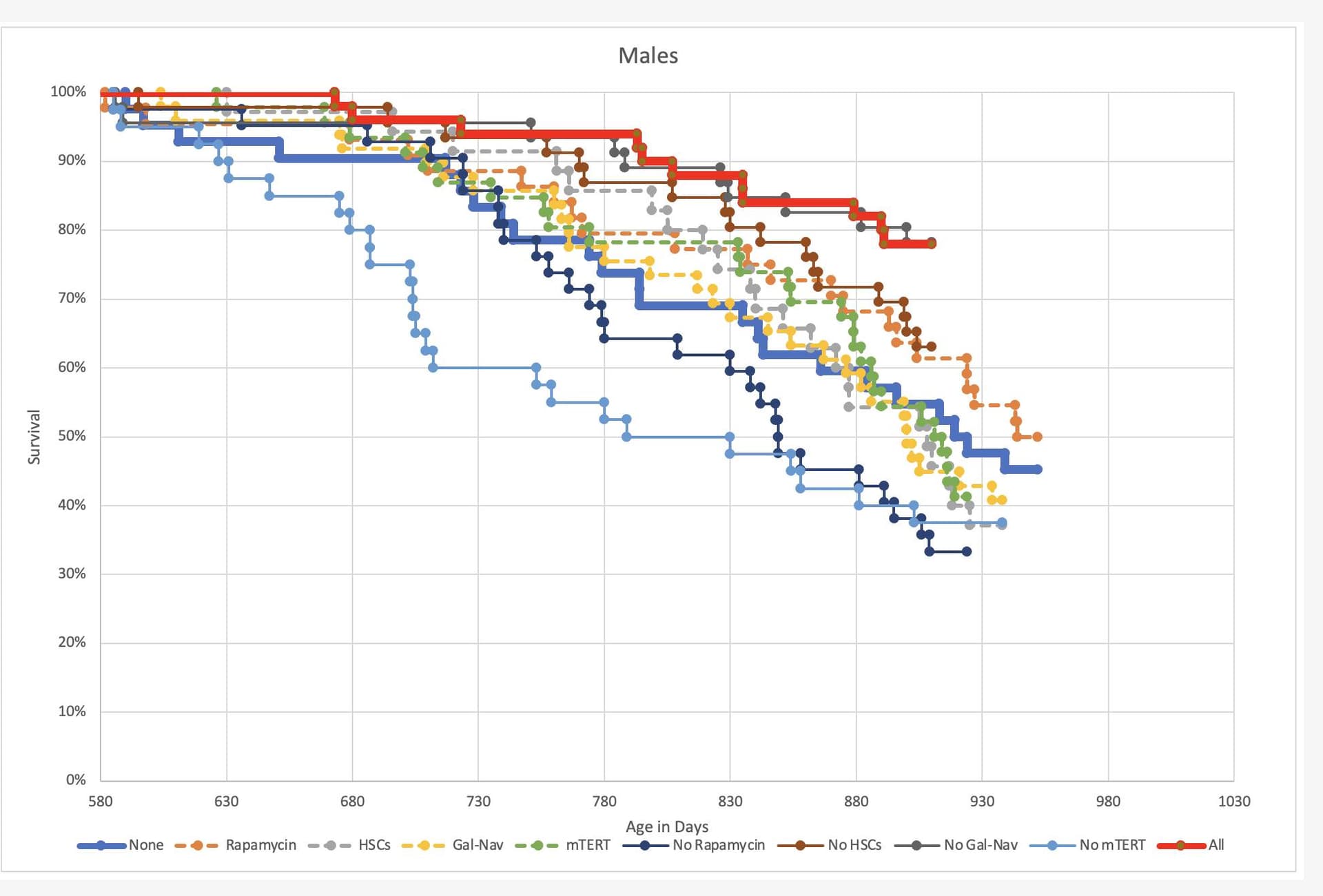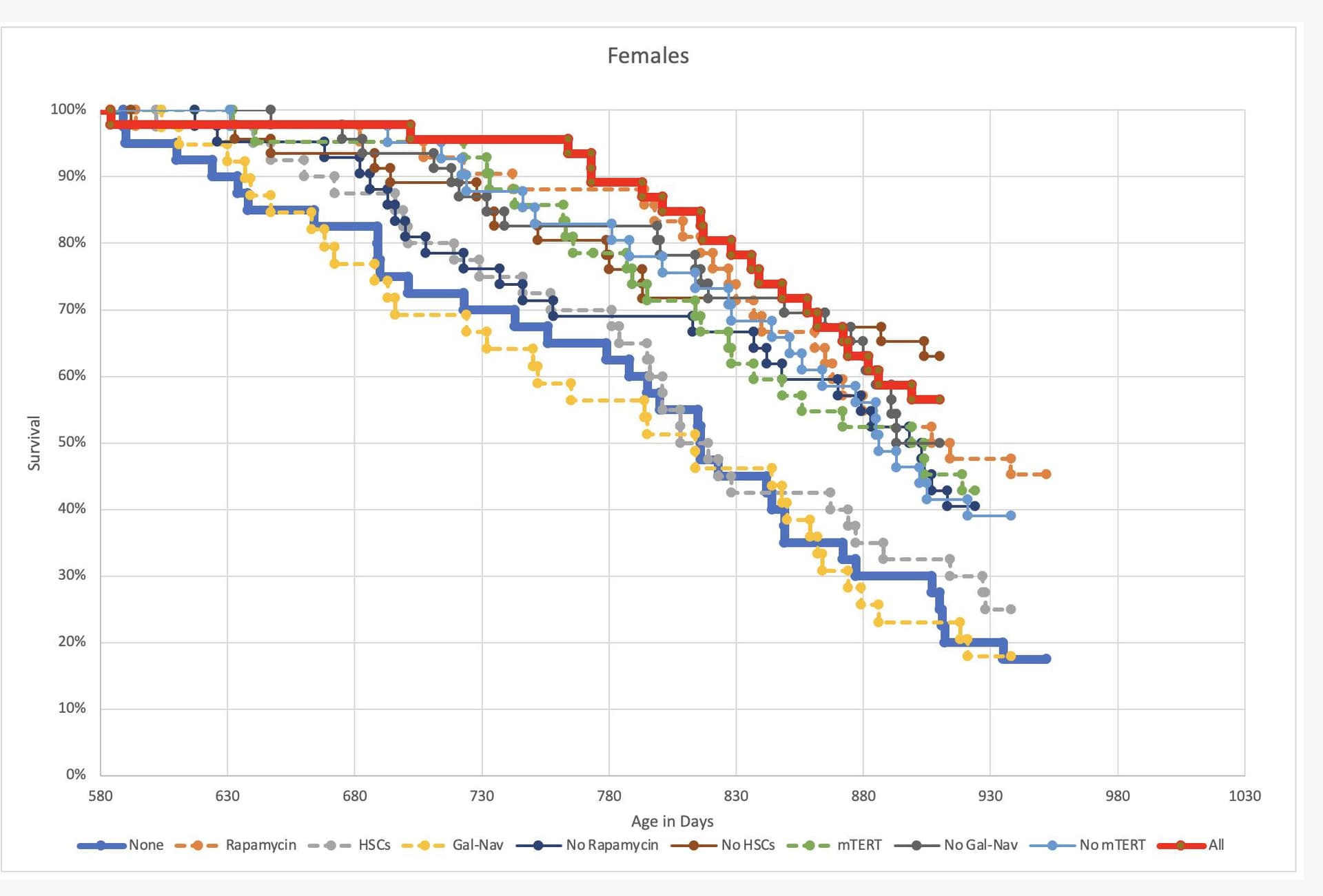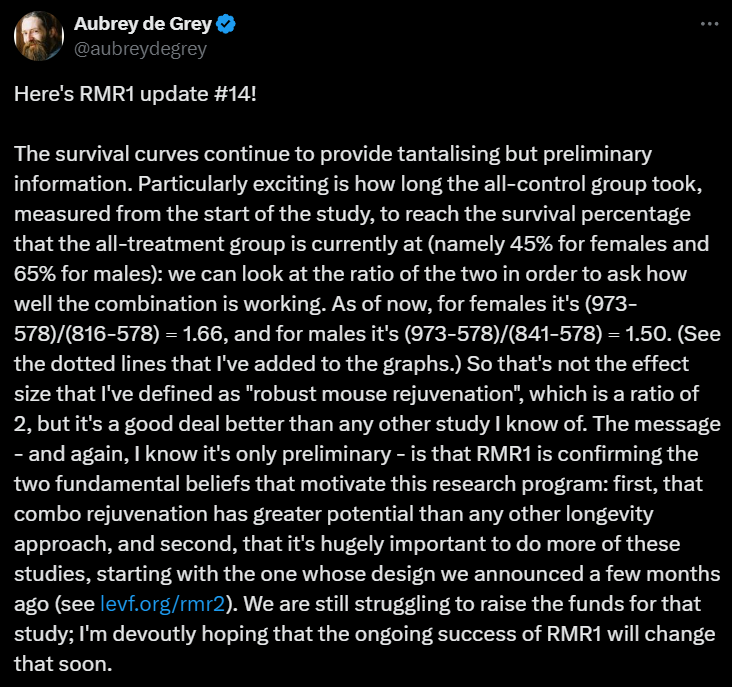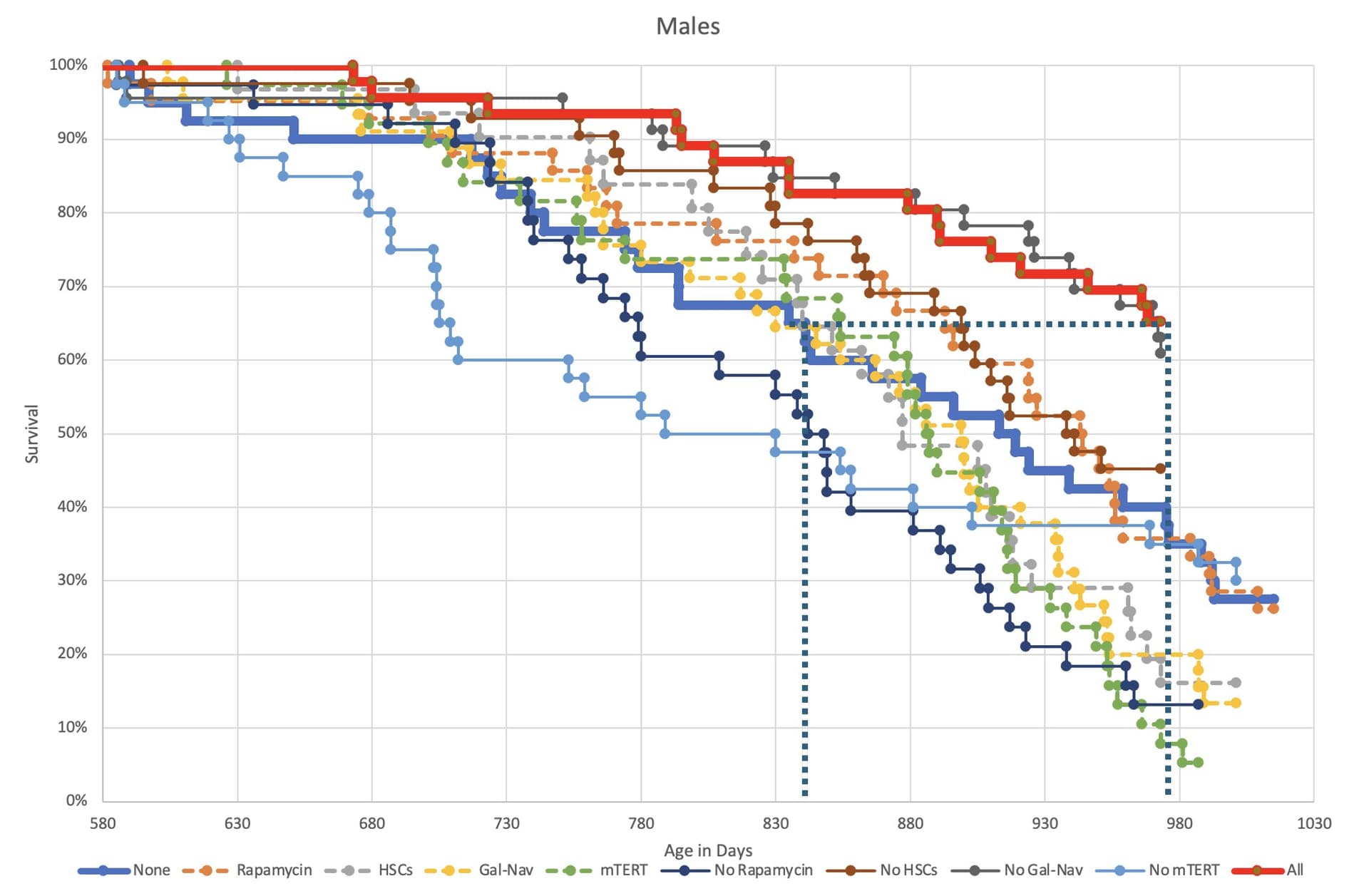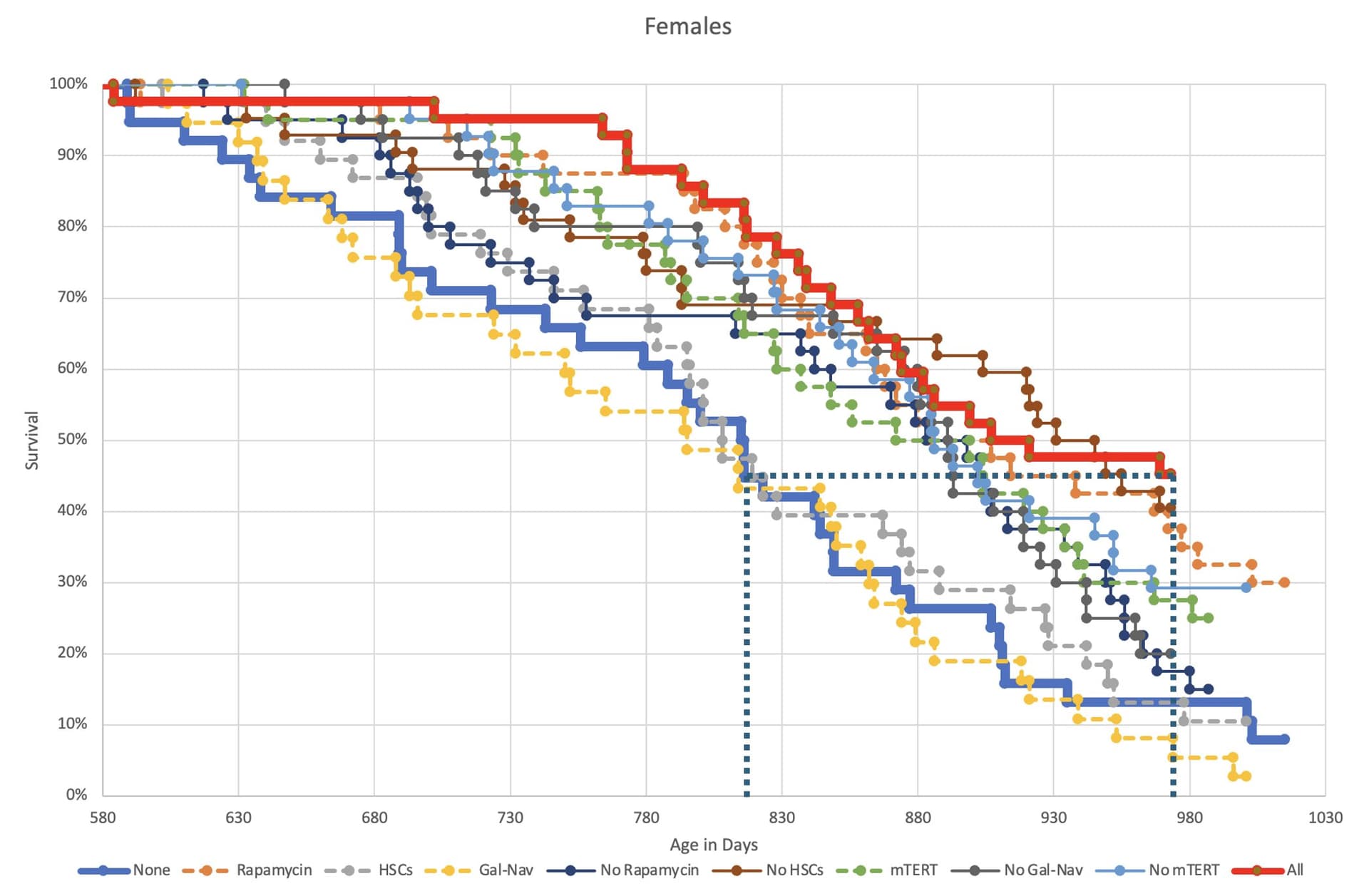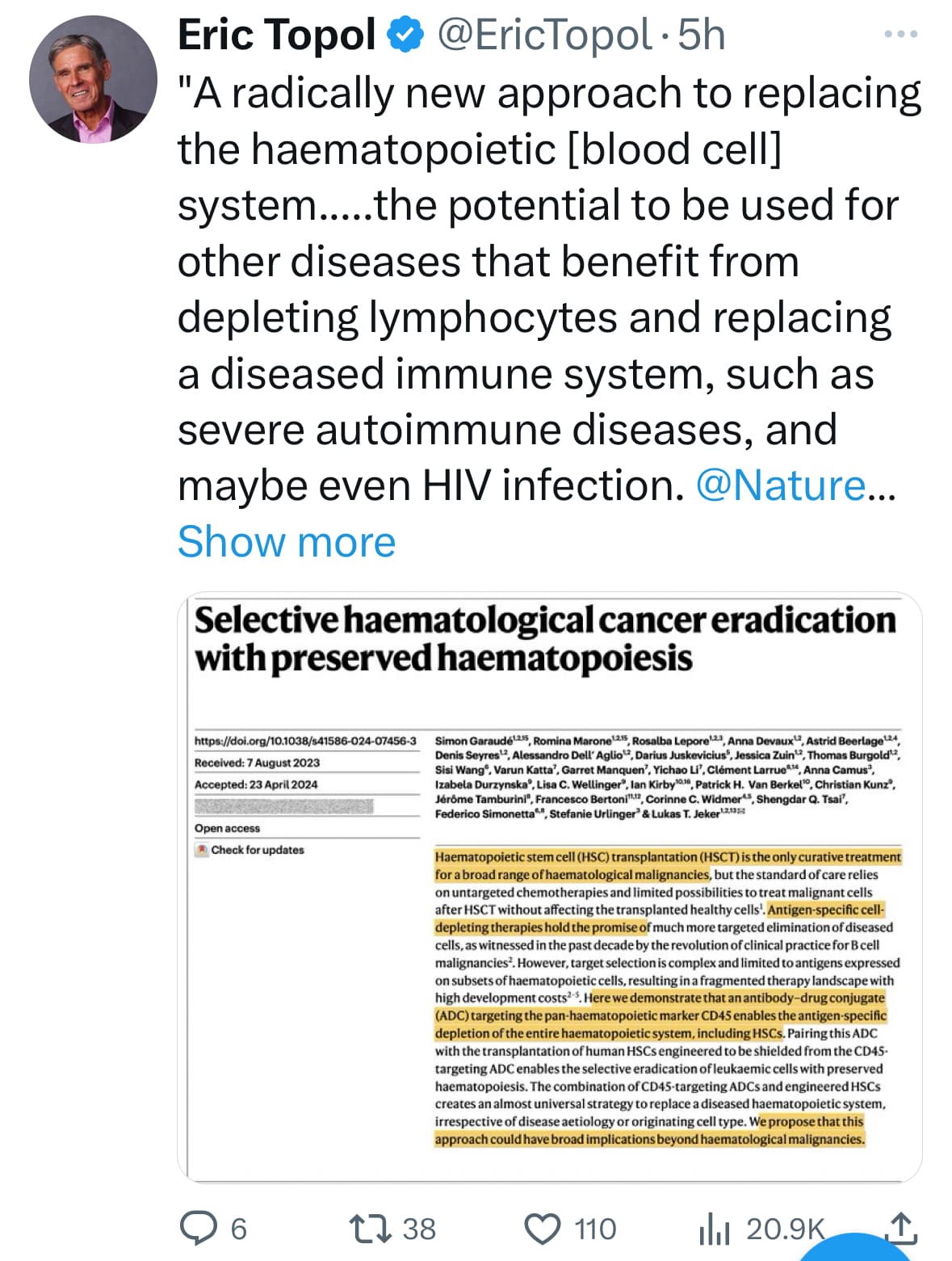Wow, I would not have seen that one coming as a contender
-
We can see clear gender differences and this is something we have also seen when ITP (Intervention Testing Program) has tested different compounds in mice. It’s interesting that we see differences in stem cell therapy but not gene therapy. Does anyone know what could be the cause why we see such a big gender difference in stem cell therapy?
-
Rapamycin seems to play a key role in several of the top synergistic cocktail combinations in the top list. This is also well aligned with my assumption why Rapamycin should be a base ingredient in the powerful longevity cocktail we will engineer to extend maximum lifespan. My guess is therefore that the best longevity cocktails will be the ones which will have effects on both slowed and reversed aging.
-
It’s very interesting that the best intervention is when all interventions were combined but it’s also interesting that female mice get the same effect if they only take Rapamycin. Let’s see how things develop in the upcoming months!
By @KristerKauppi
Heh. I don’t know how to interpret that. The all interventions except gene therapy survival is terrible in males, but the other things don’t agree. So presumably one needs to dig deeper into the error ranges.
Second study overview
Baseline treatments: Combination therapies are only valuable if their benefit exceeds that of the best known alternative. To date, the most effective rejuvenation treatments are rapamycin, caloric restriction, and exercise. We carefully considered these in the context of RMR1, opting to include rapamycin as one of the four interventions for comparison. For RMR2, we are considering giving rapamycin to ALL the animals in all treatment groups. This would allow us to gauge the efficacy of other rejuvenation interventions when the overall damage burden is already slightly lowered.
Actually, that’s a pretty smart way of doing this. Maybe they should administer Rapa and have the mice exercise and then gauge the effectiveness of treatments.
Great stuff! Keep us aprised of the developments. Thank you so much for sharing these amazing results with us!
Amazing. For males, most of the benefit is from rapamycin but additional benefit can be obtained AND it appears that no detriment is caused by adding any of the tested interventions (additive even if small). Perhaps the interventions do not overlap on mechanisms enough to cause an overload. I look forward to learning more about this.
And there is what look like a robust study, by a separate and good group in a good journal showing longevity benefits of HSCs that I had missed
… done without radiation or other toxic ways to prorate for them
Haven’t look at the paper carefully yet, but find it very exciting
Interestingly these results are in female mice even if they expect the effects to be larger in males
With age, stem cells diminish in their ability to regenerate adult tissues, likely contributing to age-related morbidity. Thus, we replaced aged hematopoietic stem cells (HSCs) with young-donor HSCs using a novel mobilization-enabled hematopoietic stem cell transplantation (HSCT) technology as an alternative to the highly toxic conditioning regimens used in conventional HSCT. Using this approach, we are the first to report an increase in median lifespan (12%) and a decrease in overall mortality hazard (HR: 0.42, CI: 0.273–0.638) in aged mice following transplantation of young-donor HSCs. The increase in longevity was accompanied by reductions of frailty measures and increases in food intake and body weight of aged recipients. Young-donor HSCs not only preserved youthful function within the aged bone marrow stroma, but also at least partially ameliorated dysfunctional hematopoietic phenotypes of aged recipients. This compelling evidence that mammalian health and lifespan can be extended through stem cell therapy adds a new category to the very limited list of successful anti-aging/life-extending interventions. Our findings have implications for further development of stem cell therapies for increasing health and lifespan.
What would you say the main 2 takeaways are?
It is quite hard to follow and I got it wrong the first time.
I think this is the study page
It looks like all the interventions apart from GalNav are very slightly better than All the Interventions.
Gal Nav may be worse than control.
Rapamycin is the most effective single intervention, but adding others apart from GalNav can make things better although hematopoietic stem cell transplantation may not make things better and might make things worse.
Very interesting results! I think it confirms that Gal-Nav may not be that useful, even in combination with other therapies (as well as possibly other senolytics). It makes me seriously reconsider using senolytics.
It does reinforce the fact that a combination of therapies work together to provide optimal lifespan. This is good news for the ‘everything and the kitchen sink’ approach.
Keep the updates coming!!! ![]()
I think there is confusion of senolytics which comes from confusion over senescent cells. I think a lot of senescent cells are cells which have got stuck and failed to differentiate properly (because of a mixture of bad mitochondria and IL-10). Hence the best solution is to get them to differentiate rather than to kill them.
Interestingly macrophages are known at times to try to donate mitochondria to cells which appear to have issues (specifically cancer cells, but probably also other cells).
I think they carefully thought through which specific (and limited number) of things to try and combine based on those thing likely not having interfering interactions.
I agree that it it suggests that certain carefully combined therapies can be beneficial in an additive way
but it has hardly at all addressed that there can be big risks and def “negative synergies” of combining things that have not been studied in combinations
